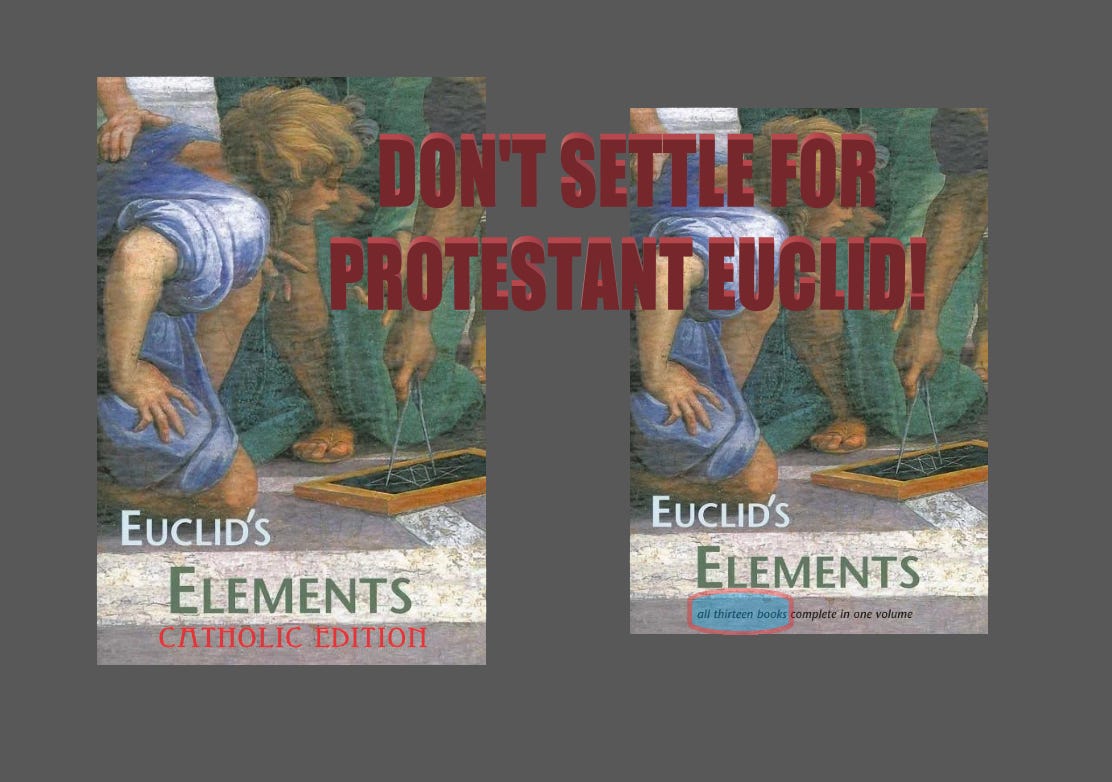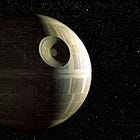Are you a student (or lover of wisdom) who’s studied or is studying Euclid’s Elements, the world-famous 2,300-year-old compendium of all necessary geometrical knowledge needed to enter into the realm of the perfect solids and be saved from the ungeometrical floundering in deathly ignorance?
Well, if you are, I have sad news for you.
You probably missed out.
You probably studied geometry with a Protestant copy of Euclid’s Elements rather than the longer, complete, unedited Catholic translations.
The Protestant versions of Euclid's Elements that abound in most places of learning have only 13 books compared to the 15 in Catholic editions.
You see, Luther thought that measuring the dihedral angles of faces of polyhedral solids that meet at an edge was too much like measuring sanctifying grace or time spent in Purgatory, so he called Books XIV and XV, which included topics like this, apocryphal. Catholic copies of the Elements still have all 15 books.
Further Protestant apologists have justified Luther’s elimination of the two books by citing the lack of any manuscripts of Bks. 14 and 15 in the original KJV English, while Catholic apologists trust in the veracity of the Greek scrolls of the two books discovered in the Essene community of Qumran, even as Protestant debaters claim that Isidore of Miletus was not really a true Apostle of Euclid and therefore that his work doesn’t count as an authentic infallibe representation of Euclid’s geometric truths.
The Dimond brothers of Most Holy Family Monastery have made a 32-hour, seven-part series defending the Catholic position on Euclid’s Elements against these Protestant critiques, which you can watch at vaticancatholic.com. However, be warned. For the Dimonds, the polyhedral solids all have apocalyptic, eschatological meanings, and the final proposition of Book 13 expounds on how comparing the polyhedral solids to each other proves that the Catholic Church after Vatican II is the “end times counter church.”
While Catholics in English-speaking countries primarily use Douay-Rheims derived translations of the Elements that are based on St. Jerome’s Vulgata Geometrica, Protestants are split between several major translations, such as King James’s King James Elements (KJV) and the New International Euclid (NIE,) even though they are, in sum, by far more common these days in terms of overall print count. Catholics should make sure they buy and use the Green Lion Press edition of the Elements that was approved for use in 1892 by Pope Leo XIII, and, surprisingly, was not revised or abrogated after Vatican II, making Euclid one of the few topics that unites most Catholics today. Still, however, Catholic printing of the Elements having fallen way behind Protestant editions, most Catholics tragically study with the incomplete Protestant versions of the book.
EDIT: It appears that the Oriental Orthodox also consider Book XVI of Euclid's Elements canonical...
More on who was Euclid from IIT:






Protestant and Catholic versions of Euclid's Elements aside, is Euclid's Elements a regular math book? I'd never heard about it until I came to my traditional parish, and I've been intrigued ever since.
Why read Euclid at all. In Christ we have died to the Elements! (Colossians 2:20)